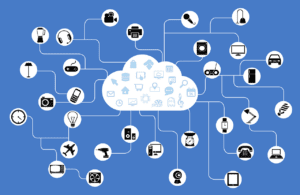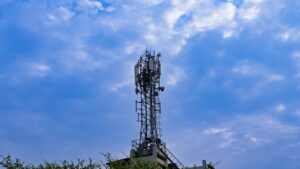The demand for faster and more reliable wireless communication is constantly increasing in today’s connected world. 5G mmWave technology is one of the latest advancements in the wireless communication industry that promises to offer significant benefits to users. In this article, we will explore the benefits of 5G mmWave technology and its impact on various industries.
What is 5G mmWave technology?
5G mmWave technology is a wireless communication technology that operates on frequencies above 24 GHz. The “mm” in mmWave stands for millimeter, which refers to the wavelength of the radio waves used in this technology. Higher frequencies allow 5G mmWave technology to offer higher data speeds and lower latency than traditional cellular networks. However, the coverage area of 5G mmWave technology is limited, requiring a dense network of small cells to provide seamless coverage.
Increased data speed and capacity
One of the significant benefits of 5G mmWave technology is its ability to deliver faster data speeds and increased network capacity. According to some estimates, 5G mmWave technology can deliver data speeds up to 10 Gbps, much faster than the current 4G networks. This increased speed and capacity will enable various applications, such as 4K video streaming, virtual and augmented reality, and IoT devices.
Low latency
Another significant benefit of 5G mmWave technology is its low latency, and the time it takes for data to travel from the device to the network and back. Low latency is critical for applications that require real-time data transfer, such as autonomous vehicles, remote surgery, and gaming. 5G mmWave technology can deliver latency as low as one millisecond, significantly lower than the current 4G networks.
Improved network efficiency
5G mmWave technology can also improve network efficiency by reducing the number of dropped calls and network congestion. The technology uses a dense network of small cells to provide coverage, which reduces the load on each cell and ensures seamless coverage. This improved network efficiency can also reduce energy consumption and operating costs.
Impact on various industries
5G mmWave technology is expected to significantly impact various industries, including healthcare, education, transportation, entertainment, and manufacturing.
Healthcare
5G mmWave technology can revolutionize the healthcare industry by enabling real-time remote monitoring and diagnosis. The technology can also enable telemedicine and remote surgery, especially in rural and remote areas.
Education
5G mmWave technology can transform education by enabling immersive and interactive learning experiences. The technology can enable virtual and augmented reality applications that simulate real-world scenarios and enhance the learning experience.
Transportation
5G mmWave technology can improve the safety and efficiency of transportation by enabling real-time vehicle-to-vehicle communication and collision avoidance systems. The technology can also enable autonomous vehicles, which can reduce the number of accidents on the road and improve traffic flow.
Entertainment
5G mmWave technology can revolutionize the entertainment industry by enabling high-quality streaming and immersive experiences. The technology can enable 4K video streaming, virtual and augmented reality, and live events with low latency and high reliability.
Manufacturing
5G mmWave technology can transform the manufacturing industry by enabling real-time monitoring and control of industrial processes. The technology can enable remote control of machinery and equipment, predictive maintenance, and real-time supply chain management.
Challenges with 5G mmWave technology
Despite the many benefits of 5G mmWave technology, some challenges are associated with its implementation. One of the significant challenges is the limited coverage area, which requires a dense network of small cells to provide seamless coverage. Implementing this can be expensive and time-consuming, especially in rural and remote areas.
Another challenge is the potential interference from buildings, trees, and other obstacles that can obstruct the signal. The technology also requires high-powered antennas and receivers, which can be costly and challenging to install in dense urban environments.
Conclusion
In conclusion, 5G mmWave technology is a significant advancement in the wireless communication industry that offers many benefits, including increased data speed and capacity, low latency, and improved network efficiency. The technology is expected to significantly impact various industries, including healthcare, education, transportation, entertainment, and manufacturing. However, some challenges are associated with its implementation, including limited coverage area and potential interference from obstacles.
FAQs
- What is 5G mmWave technology?
5G mmWave technology is an advanced form of wireless communication that operates on higher frequency bands than traditional cellular networks, offering faster data speeds and lower latency.
- What are the benefits of 5G mmWave technology?
The benefits of 5G mmWave technology include increased data speed and capacity, low latency, and improved network efficiency.
- How will 5G mmWave technology impact healthcare?
5G mmWave technology can enable real-time remote monitoring and diagnosis, telemedicine, and remote surgery, which can be especially useful in rural and remote areas.
- How will 5G mmWave technology impact education?
5G mmWave technology can enable immersive and interactive learning experiences through virtual and augmented reality applications that can simulate real-world scenarios.
- What are the challenges associated with 5G mmWave technology?
The challenges associated with 5G mmWave technology include limited coverage area, potential interference from obstacles, and the need for high-powered antennas and receivers.





